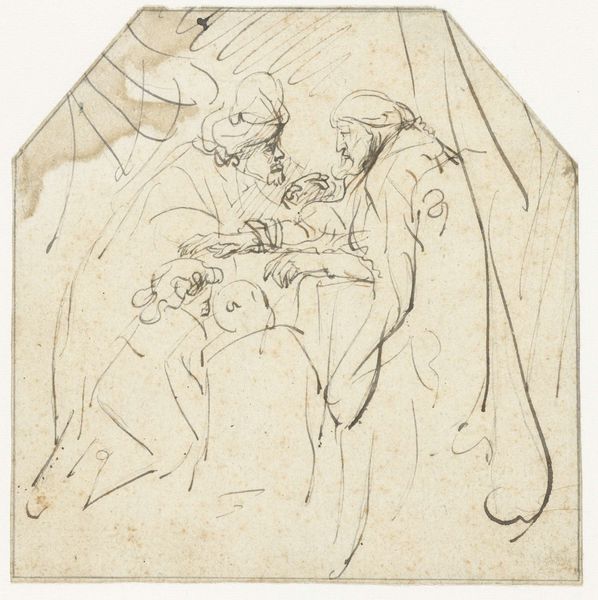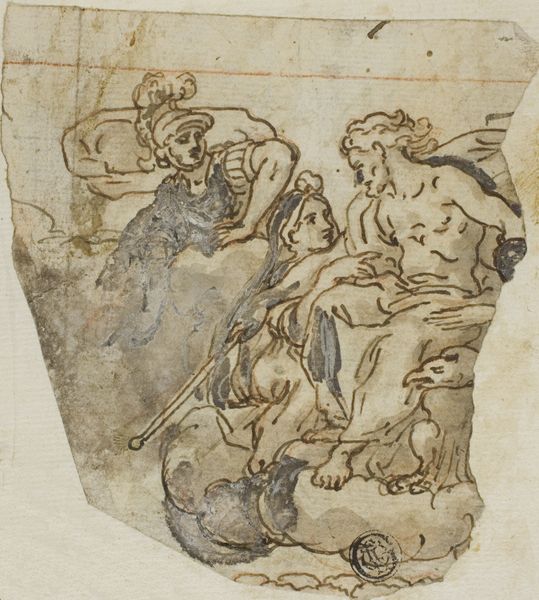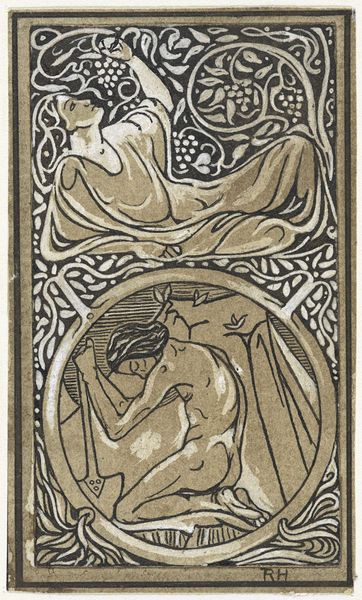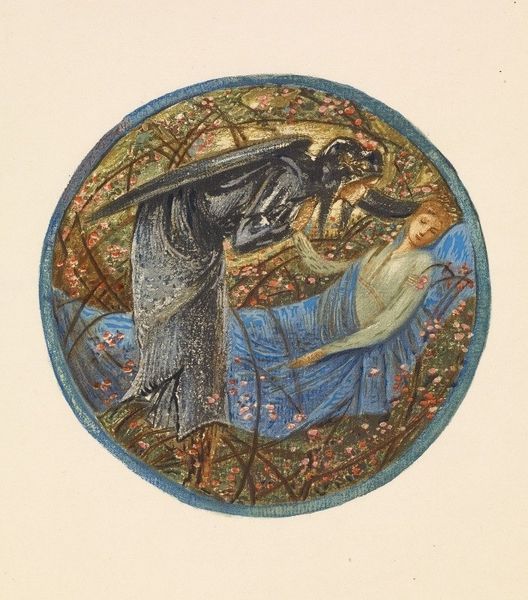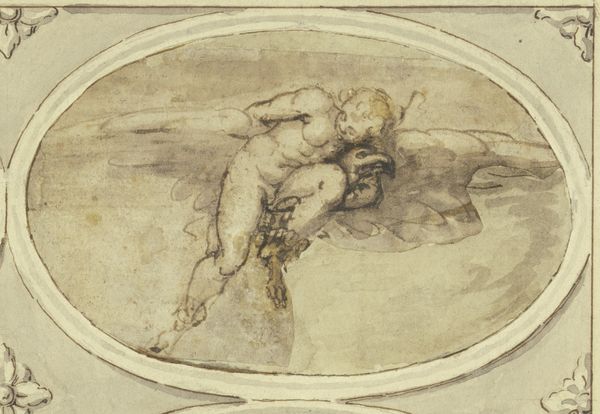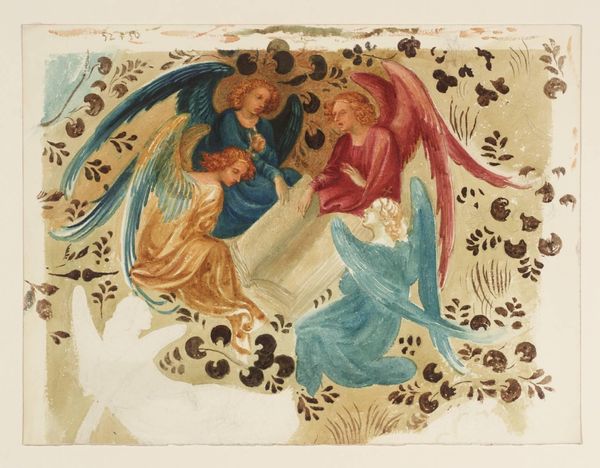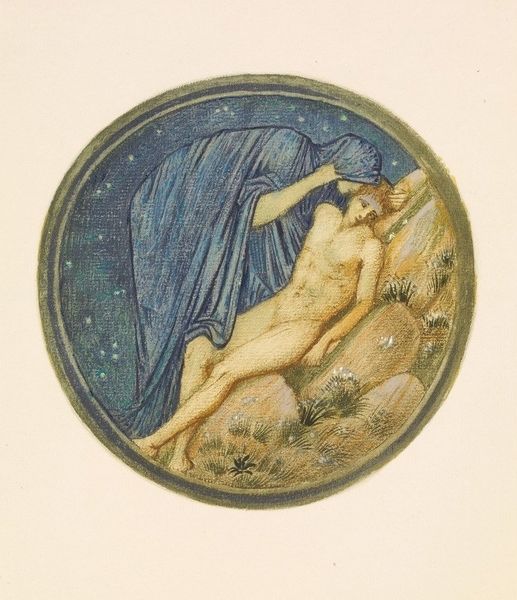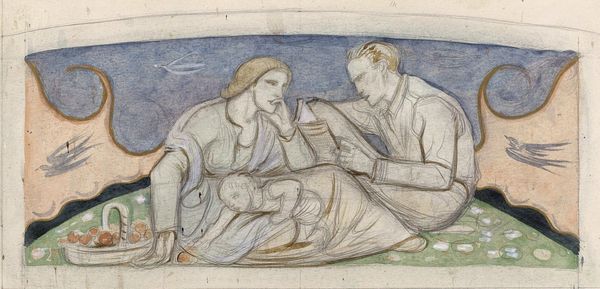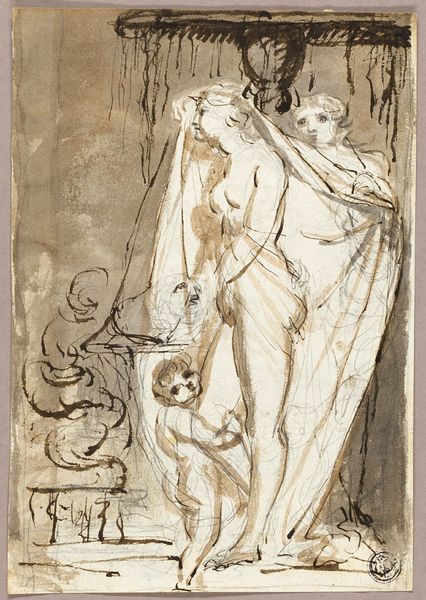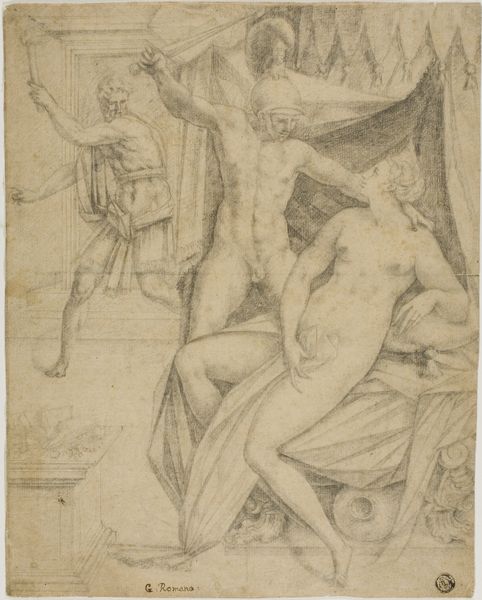
drawing, ink, pencil
#
drawing
#
toned paper
#
light pencil work
#
ink drawing
#
mother
#
pen sketch
#
pencil sketch
#
figuration
#
personal sketchbook
#
ink
#
ink drawing experimentation
#
pen-ink sketch
#
pencil
#
sketchbook drawing
#
sketchbook art
#
modernism
Dimensions: height 242 mm, width 241 mm
Copyright: Rijks Museum: Open Domain
Editor: This drawing, titled *Man, woman and child (Misery)*, is attributed to Richard Nicolaüs Roland Holst and was likely created sometime between 1878 and 1938. It's a combination of pencil and ink on paper, held in the Rijksmuseum collection. The initial impression I get is one of melancholy, perhaps due to the muted tones and the figures' postures. What strikes you when you look at it? Curator: Immediately, the formal arrangement arrests the gaze. Note the tripartite division of the composition; how the artist employs the figures and their implied psychological states to structure the entire field. Consider the tonality—the subtle gradations achieved with pencil and ink that speak to an interiority. How does the interplay of line and shading direct your eye? Editor: The figures certainly dominate. The woman's downward gaze draws me in, but I am unsure how to interpret the gestures or composition. Curator: Observe how the figures are contained within this ovular form. This framing device compresses them into a tight, almost claustrophobic space. Notice the expressive potential unleashed through the materiality. Roland Holst avoids smooth, continuous lines, opting for hatched, broken strokes, instilling an unsettled dynamic into the figuration. What impact does that have on your perception? Editor: It makes me feel uneasy, like the scene is fragmented and unstable. Curator: Precisely. And, significantly, observe the way that the arrangement undermines the traditional notion of maternal care. Where a mother should cradle or support the child, a void exists between them, destabilising the relationships. What might the artist intend by that subtle detail? Editor: I had not noticed that negative space so closely! I guess this communicates the absence of emotional support, compounding the general sentiment of "misery" expressed by the figures’ positions and pale rendering. Thanks, this really elucidated my understanding! Curator: Indeed. By examining these visual relations and their construction, we gain insight not just into Roland Holst’s craftsmanship but into the emotive power of the art. It’s the formal rendering that yields our understanding of content.
Comments
No comments
Be the first to comment and join the conversation on the ultimate creative platform.
